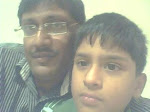London: Sanskrit may be resource starved and may find fewer pupils in India, but there are schools and universities in the UK where the language is thriving.
At the St James Junior School in London, the number of students wanting to learn the language has grown by leaps and bounds.
This chain of schools has been teaching Sanskrit since 1975. Over the years, to their surprise, they have found an increasing number of children keen on learning the ancient language, even though the script and pronunciation is difficult for English speakers.
As young students here recite Sanskrit verses from the Upanishads at the Annual Sanskrit Speech Competition, proud parents and teachers applauding their efforts
"It gives them brilliant linguistic training. Sanskrit scriptures are inspiring and full of philosophical concepts, which is why we teach it," said Warwick Jessop, the head of the school's Sanskrit department.
When asked if they find learning the language hard, most students said Sanskrit was their favourite as they enjoy the classes.
"Learning Sanskrit is unique. As not many people speak it now, it is special that we get to learn such a language. I enjoy learning Sanskrit because I suppose we are one of the few schools that study it and I feel that it benefits you in lots of different ways. As you saw, it helps in improving pronunciation and diction. I would say the spiritual benefits are also quite high. There are lots of different stories like the Ramayana and Mahabharata and there are lots of different ways of describing what was happening in the world ages ago," said a student of the school.
The curriculum at the James Junior School is set for student aged between four and 18. After completing their levels here, students can go for courses at prestigious universities like Oxford, Cambridge and Edinburgh.
Read more at: http://www.ndtv.com/article/world/sanskrit-thriving-in-schools-in-uk-34267
Monday, June 28, 2010
Subscribe to:
Post Comments (Atom)


No comments:
Post a Comment